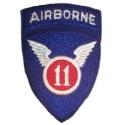Japanese Balloon Bombs hit USA & Canada
Avenging the Doolittle Raids – Project Fugo
November 1944 – Young Japanese girls wore headbands that designated them as Special Attack Force members. Daily they would recite the Imperial Precepts for Soldiers and Sailors before they began a twelve-hour shift in a makeshift factory in Kokura, Japan. Here they were producing 40 foot balloons to carry a bomb package across the ocean as they were released to drift on the Pacific jet stream.
A total of approximately 9,300 of these weapons were made and about 342 reached land, some as far east as Ontario, Michigan and Nebraska. Some were shot down or caused minor injuries and one hit a powerline of the nuclear weapons plant at Hanford, Washington.
Three days before the end of World War II in Europe and just three months before the Japanese surrendered, spinning shards of metal ripped into the tall pine trees, burrowing holes into bark and tearing needles from branches outside the tiny logging community of Bly, Oregon. The nerve-shattering echo of an exploding bomb rolled across the mountain landscape. When it was over, a lone figure—Archie Mitchell, a young, bespectacled clergyman—stood over six dead bodies strewn across the scorched earth. One of the victims was Elsie Mitchell, the minister’s pregnant wife. The rest were children. Four of the children—Jay Gifford, Eddie Engen, Dick Patzke, and Sherman Shoeman died instantly; Joan Patzke, 13 years old, initially survived the explosion but succumbed to her injuries shortly afterward.

Rev. Archie Mitchell and his wife, Elsie
Forestry workers were running a grader nearby when the force of the explosion blew one of them off the equipment. Another dashed to the nearby telephone office, where Cora Conner was running the town’s two-line exchange that day. “He had me place a call to the naval base in nearby Lakeview, the closest military installation to our town,” recalls Conner. “He told them that there had been an explosion and people had been killed.”
Within 45 minutes, a government vehicle roared to a stop in front of the telephone shack. A military intelligence officer scrambled out of the car and joined Conner inside. “He warned me not to say anything,” Conner says. “I was not to accept any calls except military ones, nor was I allowed to send out any information.” The rest of the day proved difficult, as Conner struggled with lumber companies and angry locals who had been stripped of their phone privileges without explanation.
The U.S. government immediately shrouded the event in secrecy, labeling the six deaths as occurring from an “unannounced cause.” But in the close-knit atmosphere of Bly, many of the locals had already learned the truth: Elsie Mitchell and the five children were victims of an enemy balloon bomb, held aloft by a gigantic hydrogen-filled sphere and whisked from Japan to the western seaboard of the United States. The contraption had alighted on Gearhart Mountain, where it lay in wait until the fateful day when it found its victims—the only deaths from enemy attack within the continental United States during World War II.
To help avoid similar tragedies, the government lifted the media blackout. In late May 1945, the headquarters of Western Defense Command, based at the Presidio in San Francisco, issued a cautious message entitled “Japanese Balloon Information Bulletin No. 1.” In an effort to avoid a media frenzy and quell public paranoia, the document was to be read aloud to small gatherings “such as school children assembled in groups.
Preferably not more than 50 in a group and Boy Scout troops.” The bulletin warned that many hundreds of Japanese balloons were reaching American and Canadian airspace.
For Archie Mitchell, who lost his wife, unborn child, and five members of his church on that fateful day in 1945, life eventually resumed its course. He remarried and in 1947 moved to Southeast Asia to continue the missionary work that inspired him. Unfortunately, fate would deal him yet another blow. On June 1, 1962, a wire report brought his name back into the news: “Today word came from South Vietnam that three Americans had been kidnapped by Communist guerrillas. One of them is Reverend Archie E. Mitchell, a former pastor at Bly in southeast Oregon.” Mitchell was never heard from again.
Click on images to enlarge.
############################################################################################
Today’s Military Humor –
How would you finish this caption?

###########################################################################################
Farewell Salutes –
J.R. Brown – Henryetta, OK; US Army Air Corps, WWII, B-17 waist gunner, 2nd Bombardment Squadron
Adrian Cronauer – Troutsville, VA; US Air Force, Vietnam, (Armed Forces Radio D.J.), / DOD official
Steve Ditko – Johnstown, PA; US Army, (cartoonist)
Brian Dutton – UK; Royal Navy, Falklands, Lt.Commander, mine clearance expert
Robert Hagan Sr. – PA; US Air Force, Captain, pilot
Homer Myles – Dermott, AR; US Army, WWII & Korea
Paul Racicot – Detroit, MI; US Navy, WWII
Joseph Stanhope – Berlin, NH; US Army, WWII, ETO, Bronze Star
James Shaw – Baird, TX; USMC, WWII, PTO, Korea, Major
Dale Wilson – Des moines, IA; US Army Air Corps, WWII, PTO, LT, B-25 pilot, KIA (MIA)
############################################################################################
Posted on July 23, 2018, in Home Front, WWII and tagged 1940's, History, Home Front, Japanese Bombs, Military, Military History, Pacific War, USA, war, WW2, WWII. Bookmark the permalink. 159 Comments.












Wow!I had never heard of this before your blog post the other day. Thank you.
LikeLiked by 1 person
I’m glad I supplied an item of interest, Herb.
Thank you for reading it.
LikeLiked by 1 person
Looking at that wee map … two returned to sender—insufficient postage?
LikeLiked by 2 people
hahaha – I would think insufficient air current might have something to do with it.
LikeLike
Over 9000~! Wow … that’s a lot of time, effort, and expense for such a small return. Looking at the imagery it seems they were more complex than the average Joe might suspect.
LikeLiked by 1 person
Just as we had a country united, so did they. Jeez, I wonder how much we could accomplish if we were united today?
LikeLiked by 1 person
At least one got as far as Iowa. It’s on display at the Gold Star Museum, Camp Dodge, just north of Des Moines. https://www.facebook.com/iowahistoryjournal/photos/a.435079887009/10156595169717010/?type=3&theater
LikeLiked by 1 person
Thank you for contributing to the post, Joy!!
LikeLiked by 1 person
Yes, Dale Wilson’s crew was lost 75 years ago–November 27, 1943–Thank you for remembering him: https://www.pacificwrecks.com/aircraft/b-25/42-64889.html
LikeLiked by 1 person
It’s an honor for me to mention these men!
LikeLiked by 1 person
Reblogged this on Truth Troubles.
LikeLiked by 1 person
Thank you for sharing it!
LikeLike
Like always, very good article. I am going to reblog this one for your Sir.
LikeLiked by 2 people
I’m very happy you found it interesting!
LikeLike
Wow! Many good comments! A wonderful article!
LikeLiked by 2 people
Thank you. We do have a great group of readers here, many of whom have become friends!!
LikeLiked by 1 person
That is really good: I am very happy for you.
LikeLiked by 1 person
Much appreciated.
LikeLiked by 1 person
Thank you
LikeLiked by 1 person
Many know about the balloons, but few know how many made it here and how far they traveled!!
LikeLiked by 1 person
Pingback: FEATURED BLOGGER REPORT: Arms Race By Pacific Paratrooper #AceHistoryDesk reports | ' Ace Worldwide History '